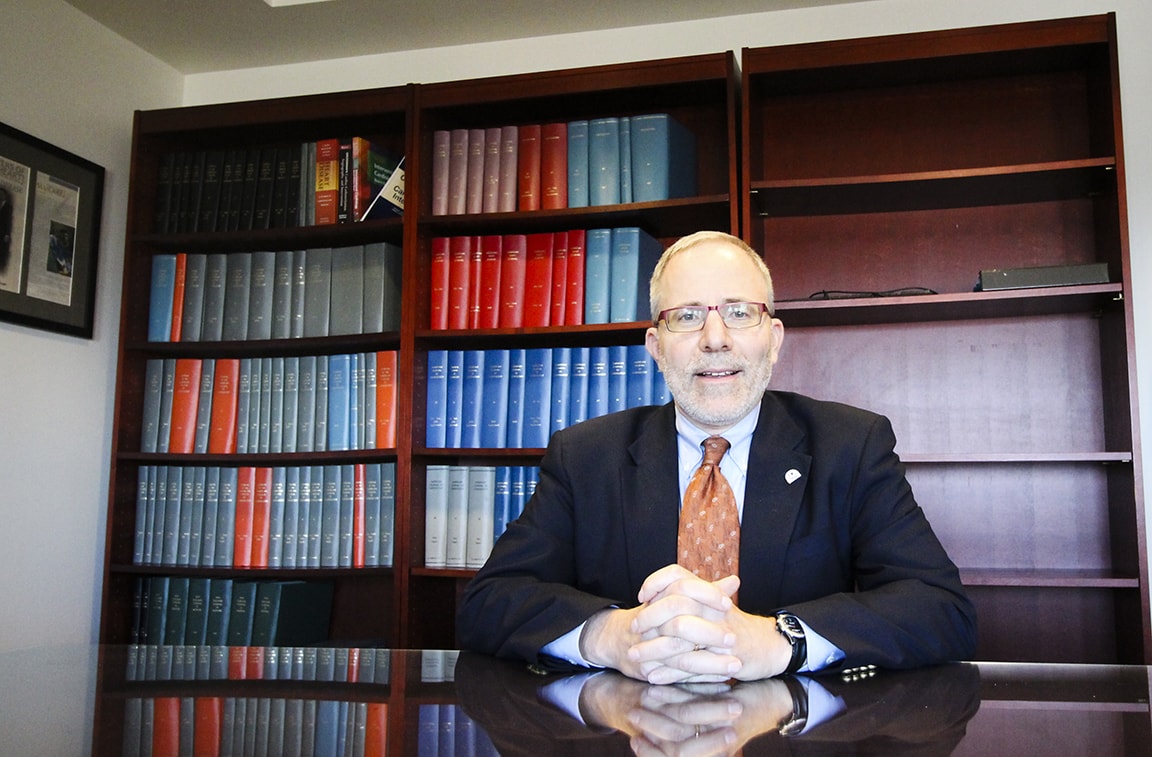Wide Price Variability of Generic Heart Failure Drugs Can Make Them Unaffordable to Uninsured
ST. LOUIS – New research from Saint Louis University finds that the prices for commonly used generic heart failure drugs varies widely.
A team of researchers led by Paul J. Hauptman, M.D., a SLUCare cardiologist specializing in heart failure and professor of internal medicine at Saint Louis University School of Medicine, found that the cost of the drugs charged at retail pharmacies may vary so widely that uninsured patients may not be able to afford them.
The research was highlighted at the American Heart Association’s Scientific Sessions 2016 on Nov. 15. A research letter also was published in JAMA Internal Medicine.
“The idea for the study originated with one of our patients, a 25-year-old man with heart failure, who called the office and said he could not afford to fill a prescription for Digoxin,” Hauptman said. “When I found out that a month’s supply was going to cost him $100, I couldn’t believe it. Like me, I think a lot of doctors assume that if you’re writing a prescription for a generic drug that it will be affordable — and that’s not necessarily the case.”
An estimated 7.3 million Americans with cardiovascular disease are under-insured or uninsured.
Hauptman and his team surveyed 175 pharmacies in the bi-state St. Louis region to determine what they charged uninsured customers for three generic guideline-directed medicines (Digoxin, Lisinopril and Carvedilol) used to treat heart failure. The pharmacies were queried during a three-week period in May, and data were provided from 153 chain stores and 22 independently-owned pharmacies in 55 different zip codes.
The 30-day cash purchase price for the three drugs ranged from $20.19 to $256.77 for the low doses of the drugs, with a median price of $67.98; and $12 to $397.58 for the high doses of the drugs, with a median price of $70.68. Similar data were obtained for 90-day supplies.
Digoxin, the oldest medication, was the most expensive of the three.
The study did not find a link between price, area and type of pharmacy. Zip code and median income clusters in the region also did not demonstrate differences so that pharmacy location did not predict pricing.
The researchers also found that prices varied even at stores owned by a single major pharmacy chain. Mail order pharmacies were not included, as they are not an available option for most uninsured and under-insured patients.
Patients with heart failure commonly take five or six medications, Hauptman said. Patients in low income areas, who may be at highest risk of complications from heart failure may not have convenient access to multiple pharmacies to price shop for the cheapest medication, leaving them vulnerable to lapses in adherence.
Since a greater understanding of pricing practices at the retail pharmacy level is required, the researchers recommend that the study be replicated in other geographic areas and with different generic drugs to treat other medical conditions. At the same time, Hauptman indicated that there are potential health policy implications based on the current data and that from the patient perspective, the variability seen at the pharmacy can be very difficult to manage.
Co-authors are Zackary D. Goff, B.S., a fourth-year SLU medical student; Andrija Vidic, D.O.; John T. Chibnall, Ph.D., Saint Louis University School of Medicine; and Barry E. Bleske, Pharm.D., professor of pharmacy practice and administrative sciences, College of Pharmacy, University of New Mexico.
Established in 1836, Saint Louis University School of Medicine has the distinction of awarding the first medical degree west of the Mississippi River. The school educates physicians and biomedical scientists, conducts medical research, and provides health care on a local, national and international level. Research at the school seeks new cures and treatments in five key areas: infectious disease, liver disease, cancer, heart/lung disease, and aging and brain disorders.


















